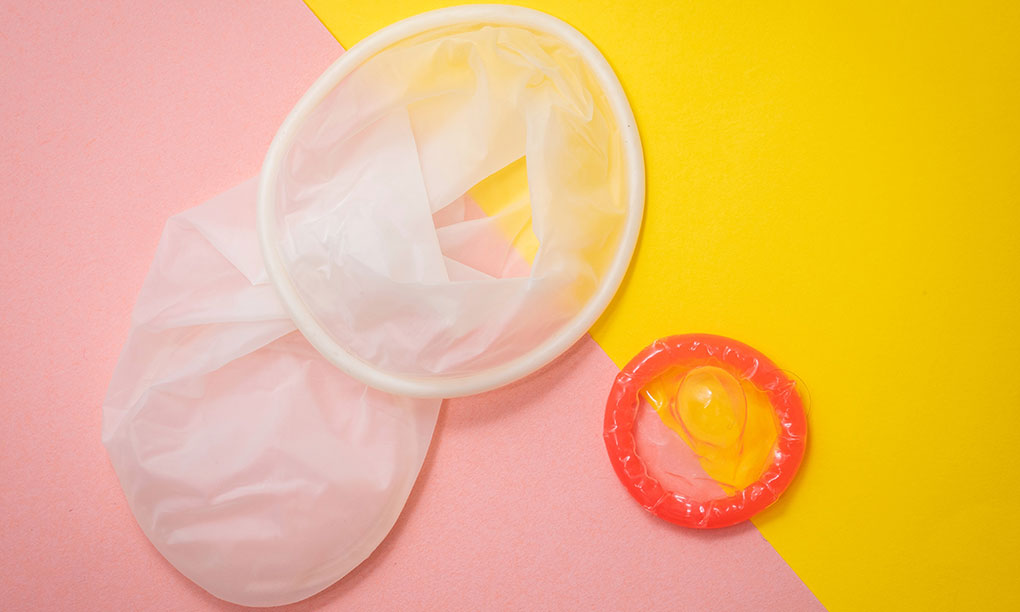Sexually transmitted diseases can be caused by a variety of viruses, bacteria and parasites and can be transmitted through sexual behaviors such as unprotected vaginal, anal and/or oral intercourse. The United States has the highest rate of sexually transmitted diseases (STDs) of any industrialized nation with about 19 million Americans contracting a STD each year. Statistics predict that one in every two Americans will catch at least one sexually transmitted disease in their lifetime. Proper sexual education and being well informed of STD risks is one way that you can prevent one of these infections. Though there is a lot of accurate STD information available, unfortunately there are also a lot of STD myths as well. Here are some common myths about sexually transmitted diseases.
1. You Cannot Get a Sexually Transmitted Disease from Skin-to-Skin Contact
Some people believe that as long as you are not having sex, you cannot catch a STD. This is not the case. Some sexually transmitted diseases, such as pubic lice and scabies can pass from partner to partner just through skin-to-skin contact. To best protect yourself, it is important to understand the different ways that STDs can be transmitted.
2. The Birth Control Pill Provides STD Protection
It is important to realize that protecting against pregnancy and protecting against a sexually transmitted infection is not the same thing. Many hormonal contraceptives may be very effective at lowering your chances of getting pregnant, but these birth control methods do not prevent sexually transmitted diseases. Because the pill does not stop the sharing of bodily fluids during sex, it does offer any STD protection.
3. The Greatest STD Risk is from Oral Sex
Though many teens do not realize that sexually transmitted diseases can be caught during oral sex, the CDC and many health professionals consider unprotected anal sex to have the highest STD risk rate. This is because the tissues around the anus are very fragile and small tears (called fissures) commonly occur after having anal intercourse or after using sexual toys that have been inserted into the anus. The best way to prevent STDs during anal sex is by using condoms. You may also want to make sure that all of your sex toys are sanitized and not shared with others. If you want to protect yourself from STDs during oral sex, dental dams can be used as an effective barrier.
4. STDs, like Chlamydia and Gonorrhea, Will Eventually Go Away on Their Own
Chlamydia is the most commonly reported sexually transmitted disease, followed by gonorrhea, and then syphilis. Since 2001, chlamydia rates have been steadily increasing each year. STDs like chlamydia, gonorrhea and syphilis are caused by bacteria, so they need to be treated with antibiotics in order to be cured. Very often, women who have these sexually transmitted diseases will not have any symptoms, so they may not even know they have been infected. This is why STD testing is so important. Though bacterial STDs can be easily treated with antibiotics, they can cause long-term problems such as pelvic inflammatory disease, fallopian tube scarring and/or infertility if left untreated.
5. Two Condoms are Better Than One at Lowering STD Risk
Logically, one may assume that using two condoms will provide better STD protection than one, but in reality, this is not the case. Doctors and condom manufacturers advise that unnecessary friction can be caused between two condoms during sexual activity and this increases the chances that either one or both of the condoms can break – leaving you at higher risk for both contracting a sexually transmitted disease as well as pregnancy. This is the case for the use of two male condoms or using both a male and a female condom. Bottom line… “double-bagging” condoms is a no-no.
6. You Can Only Contract Herpes if Your Partner is Having an Outbreak
Herpes is a common, recurrent, viral sexually transmitted disease characterized by sores on the mouth or genitals. During inactive periods (when no sores are present), the virus cannot be transmitted to another person. Yet this can be tricky since the herpes virus, at various times (unknown to the person infected with it), often begins to multiply again without causing symptoms or sores (known as asymptomatic shedding). During this shedding or when open sores are present, the virus can infect other people during any type of sexual contact or kissing. Currently, there is no cure for herpes.
7. Heterosexual Men Cannot Become Infected with the Human Immunodeficiency Virus
Any person can catch HIV if they engage in unprotected sexual behavior with an infected partner. HlV does not discriminate based on sexual orientation. Gay or straight men and women can contract HIV. Females (or those who engage in anal sex) may be at greatest risk for becoming infected with HIV or another sexually transmitted disease because the cervix is more vulnerable to certain sexually transmitted organisms. Plus, vaginal tissue or anal tissue is more likely to tear during sexual activity making it easier for STDs of HIV to enter into the bloodstream.
8. If You Have Sex in a Pool or Hot Tub, the Chlorine Will Kill Any STDs
The idea behind this myth is that if you are having sex in chlorinated water, the chemical will kill the sperm. Though chlorine can act as a spermicide, its effectiveness depends on how heavily chlorinated the water is. Even if there is a lot of chlorine present, it is unlikely that enough of the chlorine would reach deep enough inside a woman’s vagina in order to kill the sperm which have been ejaculated into it. Water containing chlorine or even hot water (like in hot tubs) does not prevent the transmission of STDs. In fact, the risk of infection or irritation may become greater when the water contains salt, chlorine or bacteria as these can be forced into the vagina by the thrusting motion during underwater sex. Having sex in the water could also increase a woman’s chances of developing a urinary tract infection and/or a yeast infection. Female condoms are the most effective way at preventing STDs while having sex in the water. Male condoms can be effective but may also be difficult to use properly in the water. If relying on male condoms, it is best that you put the condom on while you’re out of the water and double-check to make sure it stays on during underwater sex.
9. Once You Have a STD, You Are Less Likely to Contract Another One
Unlike chicken pox, being infected with a sexually transmitted disease does not lower your chances of catching another one. In fact, a person with one STD is actually more susceptible to getting another one. This is because it is easier for a different disease-causing microorganism to infect skin that is already inflamed, torn, blistered or irritated.
10. If You Don’t Have a Condom, Use Plastic Wrap
This is a huge myth, with many believing that plastic wrap (baggies or balloons) can prevent sexually transmitted diseases if there are no condoms around. These household items do not fit well, so they can easily come off during sex. Since it is not designed to withstand the friction of sexual activity, plastic wrap can also be easily torn. Condoms are specifically made to offer a good fit (as there are many types and sizes of condoms for this reason) and are thoroughly tested for maximum effectiveness. So, if you are not using a latex, polyisoprene or polyurethane condom, you may be increasing your STD risk. In addition to plastic wrap, keep in mind that natural (lambskin) condoms are also ineffective in protecting against sexually transmitted diseases. These condom types have small pores that can allow STD pathogens to get through.












